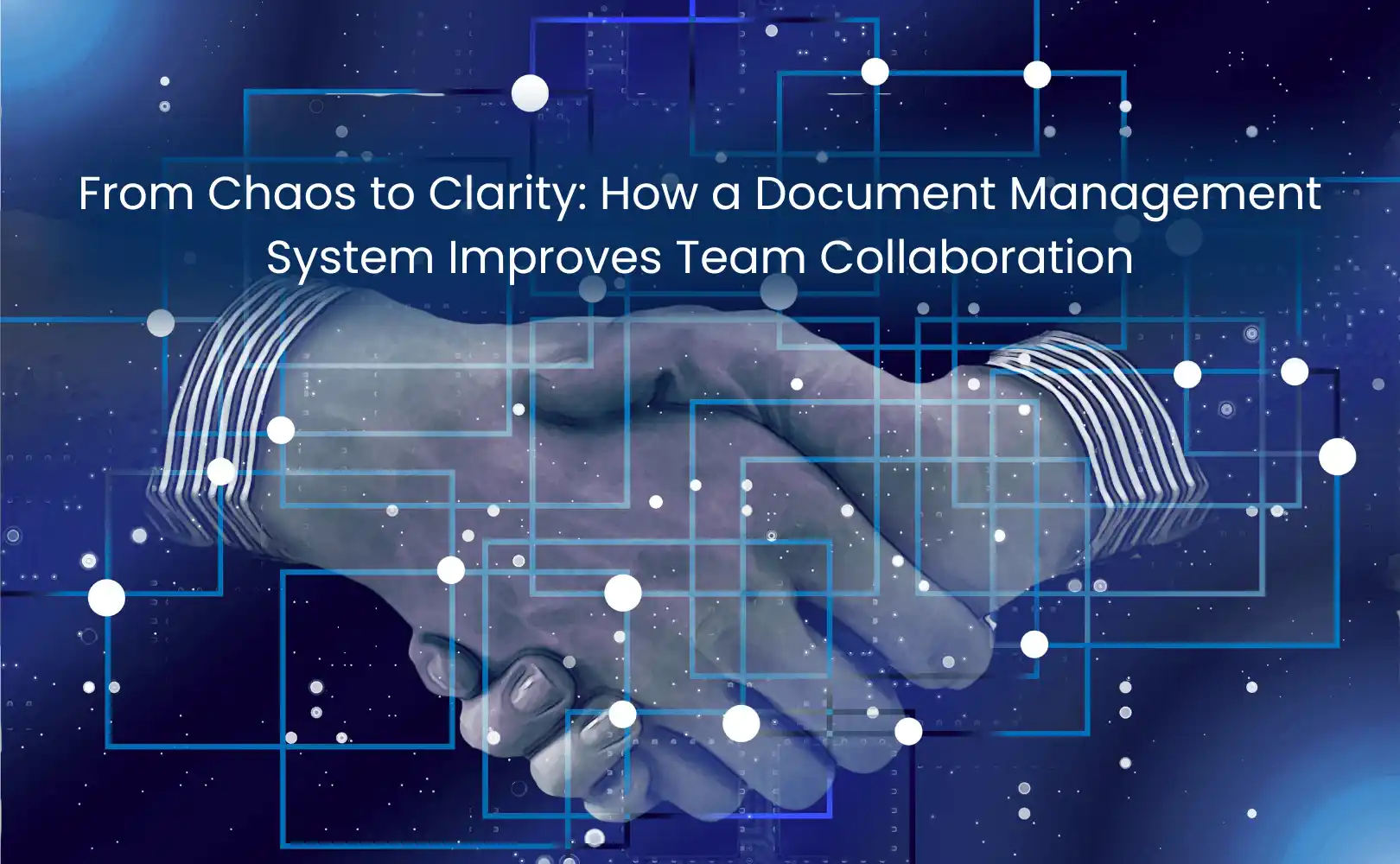Team collaboration is the backbone of every successful organization. Yet, without a clear system, collaboration can quickly turn chaotic. Dispersed files, unclear version control, delayed approvals, and miscommunication slow projects, frustrate employees, and even impact revenue. A modern Document Management System (DMS) brings clarity, efficiency, and security, allowing teams to work smarter and faster while reducing errors.
Common Challenges in Team Collaboration Without a Document Management System
Organizations without a DMS often face:
- Scattered files across multiple platforms, making document retrieval time-consuming
- Version conflicts, where team members accidentally work on outdated or duplicate documents
- Manual approval workflows, causing delays in project completion
- Lack of transparency, making it unclear who is responsible for edits or approvals
- Security risks, since sensitive documents are stored inconsistently or improperly
These challenges do more than slow productivity—they increase operational risks, create compliance issues, and lower employee satisfaction.
How a Document Management System Brings Order
A Document Management System centralizes files, organizes them logically, and provides advanced search capabilities. Employees can quickly locate the right document using intelligent search, automated tagging, or metadata.
By creating a single source of truth, collaboration becomes seamless. Teams no longer worry about missing files or conflicting versions, reducing stress and boosting productivity. When team members know where to find documents and which version is correct, projects move faster and more efficiently.

Leveraging AI and Automation for Smarter Collaboration
Modern Document Management Systems now include AI and automation features to further enhance collaboration. These technologies allow organizations to:
- Automatically classify and tag documents, reducing the need for manual input
- Automate approval workflows, ensuring that documents reach the right team members promptly
- Provide context-aware search, making it easier to find relevant files
AI-Powered Collaboration Features
AI can detect duplicate files, highlight missing approvals, and even suggest the best team members to review or edit documents. These features reduce human error, ensure compliance, and allow teams to focus on high-value work rather than repetitive administrative tasks.
Automation in Practice
Automation routes documents automatically to the appropriate stakeholders, triggers reminders for pending approvals, and ensures that compliance checks are completed on time. This smooth workflow reduces bottlenecks, keeps projects on schedule, and minimizes human error.
Example: A Marketing Team
Consider a marketing team preparing a product launch. Without a DMS, multiple versions of press releases, social media graphics, and campaign plans may circulate, leading to confusion. With a DMS, all documents are stored centrally, AI tags them, and automated workflows route files to the right approvers, ensuring the launch is seamless.
Cloud-Based Document Management for Remote Teams
With hybrid and remote work becoming the norm, cloud-based Document Management Systems are essential. They provide:
- Secure access from any device or location
- Real-time collaboration, allowing multiple team members to work on the same document simultaneously
- Automatic backup and disaster recovery, protecting critical files
- Scalability, accommodating growing teams and expanding projects
Cloud DMS ensures that distributed teams maintain version control, work efficiently, and stay compliant with regulations, all while remaining connected.
Best Practices for Implementing a Document Management System
To get the most out of a DMS, organizations should:
- Define clear folder structures and naming conventions to keep files organized
- Train employees to ensure proper usage of the system and adherence to workflows
- Regularly audit access permissions and compliance to maintain security and accountability
- Leverage AI and automation to reduce repetitive tasks and improve workflow efficiency
- Set up document retention policies to keep content relevant and reduce clutter
Following these practices ensures the DMS not only organizes files but actively improves team collaboration, productivity, and compliance.
Real-World Impact of a Document Management System
Organizations implementing an AI-powered, cloud-based Document Management System report measurable improvements:
- Faster decision-making, since documents are easily accessible
- Reduced errors and version conflicts, minimizing costly mistakes
- Higher employee satisfaction, as repetitive administrative tasks are automated
- Improved regulatory compliance, reducing legal and financial risk
Teams can focus on strategic initiatives rather than mundane administrative work, improving overall business performance.
Case Study Example
A mid-sized IT firm struggled with document chaos across five departments. After implementing a DMS, they saw:
- 60% faster document retrieval
- 50% reduction in version conflicts
- Employees reporting higher satisfaction with workflows
This demonstrates that a DMS can transform not just collaboration, but the overall efficiency of an organization.
Outgoing Resources for Learning
For additional insights into modern collaboration and DMS technology:
- Harvard Business Review: Collaboration in Modern Workplaces
- Forrester: Future of Work Technology
- TechRepublic: Cloud Collaboration Trends
- Gartner: Document Management System Best Practices
These resources provide research-backed advice for improving teamwork and productivity through digital tools.
Conclusion
A Document Management System is no longer optional—it is essential for modern teams seeking clarity, efficiency, and productivity. By centralizing files, automating workflows, and enabling real-time collaboration, organizations empower teams to work smarter, faster, and more accurately.
Ready to transform your team’s document workflows? Discover how My eOffice eDMS can help your organization build a secure, collaborative, and future-ready digital ecosystem.




